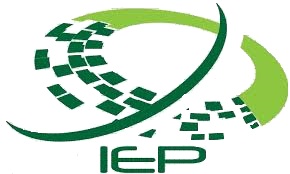Zubair Ahmed Bin Naseem Ahmed
Islamic banking is a part of Islamic financial system. In Islamic banking, there are two major stakeholders, i.e. depositors which invest their savings with Islamic bank and financing side clients who avail financing for the purchase of different types of assets.
Islamic banks use different types of Islamic finance modes, mainly categorized into trade, lease and partnership-based finance modes. Generally, these modes are combinations of Islamic finance core and supporting concepts. For example, Murabaha financing is the combination of purchase agency (Wakalah concept) and Murabaha sale. This article employs Bloom’s Taxonomy to identify the stakeholders of this system and their responsibilities in mutual understanding, resolution of conflicting thoughts and synergistic teamwork.
Contemporary Islamic banking must comply with banking regulations along with the Islamic regulations. According to Mufti Dr. Irshad Ahmed Aijaz, the Islamic banking system has four categories of stakeholders:
• Practitioners
• Beneficiaries
• Theorists (or Academicians)
• Regulators
These stakeholders, especially theorists or academicians, can also be divided into further three types. First category includes the people who have a background of Shari’ah and Islamic sources, and the knowledge of contemporary banking, finance, and economics. The second type consists of the people who have a background of modern banking, finance or economics, and the understanding of Shari’ah sources. The last type includes all others.
Bloom’s Taxonomy can help clarify and solve the issue and confusion of type three of the above. Bloom’s Taxonomy, originally developed by Benjamin Bloom in 1956, has six levels, as illustrated in Figure 1.
Figure 1: Bloom’s Taxonomy Levels

The issue is that Islamic banking is operating mostly in a dual banking system. Most of the stakeholders or potential stakeholders do not have adequate knowledge and understanding of both the financial and Shari’ah aspects simultaneously. But, they are trying to do analysis and even evaluation of Islamic banking system, which is inappropriate according to the order of six levels in Bloom’s Taxonomy. To do proper analysis or evaluation, one must have adequate knowledge and understanding of that system as per the Bloom’s Taxonomy.
Since Riba is war against Allah and His Messenger (PBUH), as per Al Quran Surah Baqarah Ayah 279, it is not only the responsibility of one category of stakeholders or one segment of Muslim Ummah to do efforts against Riba. It is the responsibility of every member of Muslim Ummah to contribute for this noble cause with their abilities by knowing and understanding at least the basic principles of Islamic finance.
Without adequately understanding Islamic finance principles and contemporary system’s limitations, there cannot be appropriate analysis and evaluation of the struggles of the people who want to do something against the Riba based system. It may lead to opposing the struggle without providing alternates. Ultimately, this can be harmful to the efforts against Riba.
In the context of Bloom’s taxonomy, by and large, critics of Islamic banking have inadequate knowledge and comprehension about the core concepts of Islamic banking. They may have adequate knowledge and comprehension of finance and economics.
When they try to analyze, synthesize and evaluate Islamic banking with adequate knowledge of finance and economics but inadequate knowledge of Shari’ah foundations of Islamic finance core concepts, they tend to criticize Islamic banking from the lens of economics and finance mostly. That criticism, which may partially be valid from the economics and finance viewpoint, does not hold much weight in undermining the Shari’ah foundation of Islamic finance. Hence, it is important that in critical evaluation of Islamic banking and finance, both the perspective (economics or Shari’ah) must be clearly acknowledged and for evaluation from the Shari’ah perspective, the knowledge and comprehension gap is filled too for better mutual understanding and resolution of conflicting viewpoints.
Categories: Articles on Islamic Finance


This is a very shallow approach.
We must answer few things before we move to products.
Does Islam have an Economic System?Is Banking Part of that?What is Islamic Banking?When did Islamic Banking start?What is gene of Banking?What is the difference between Islamic Banking & Banking?Riba & Jews fled from state of Madina which crossed 3 Continents?Did Riba disappear from Globe?How did that come back?Did Banking start after Riba came back?
Sec 5 states the content of Banking.There is no Riba in that.Why?I will wait for 2 days then write further.Let us make the issue Clear.
LikeLike
Thanks for your feedback. The article was meant to bring home the point that there is need for better understanding among the proponents and critics of Islamic Banking. Evaluation of Islamic Banking without adequate knowledge of theory and practice may lead to criticism that reflects misunderstanding. That was the basic argument of author. For a constructive contribution to the debate, if you raise something related to the main theme of the article, then it will be useful. If you want to share a different perspective, most welcome to write a separate article on that.
LikeLiked by 1 person